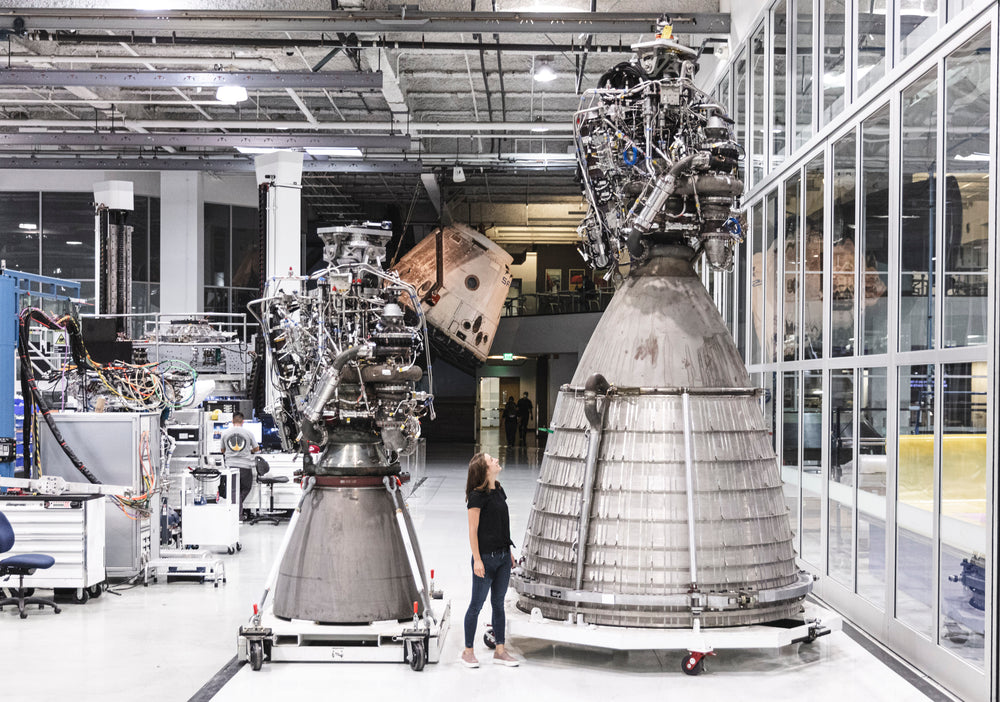TESMANIAN by Evelyn Arevalo September 04, 2020
SpaceX is rapidly manufacturing multiple Starship prototypes at the South Texas facility located in Brownsville’s Boca Chica beach. An orbital-class Starship will be equipped with six powerful Raptor engines. Raptors are fueled by cryogenic methane and liquid oxygen which is a unique fuel combination in the aerospace industry. Each Raptor is capable of producing over 200 tons, or 2MN (meganewtons), of thrust at full throttle. Three of Starship’s Raptors will be sea-level engines for atmospheric flight, and three vacuum-optimized Raptors for propulsion in space. Vacuum-optimized engines are more complex and different than sea-level engines; they're specifically designed to have a higher performance in the vacuum of space. A visible difference between the two engines is that the bell nozzle is larger in the Raptor vacuum engine. Today, SpaceX shared a photograph showcasing the gigantic Raptor vacuum engine, pictured below. “The first Raptor Vacuum engine (RVac) for Starship has shipped from SpaceX’s rocket factory in Hawthorne, California to our development facility in McGregor, Texas,†SpaceX announced.
The founder of SpaceX Chief Engineer Elon Musk stated – “Worth noting that thrust is only slightly higher with the big bell nozzle version. Larger bell is primarily for efficiency in vacuum. Aiming for 380+ sec Isp for RVac long-term. Initially likely to be ~372,†he explained via Twitter. Musk was asked today: 'what are the odds of the RVac engine surviving its first test flight', if he was confident the new design with a larger nozzle had a chance of success, to which he responded – “Above 50% likely to make it.†The vacuum-optimized Raptor will likely be tested in the environment of space sometime next year.
Musk said SpaceX aims to conduct the first orbital Starship test flight in 2021. Meanwhile, the company started the construction of an “orbital launch mount†at the South Texas launch pad designed for the first Starship that will conduct a test flight to space.
More:
https://www.tesmanian.com/blogs/tesmanian-blog/raptor-vac